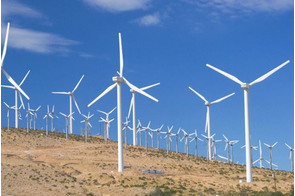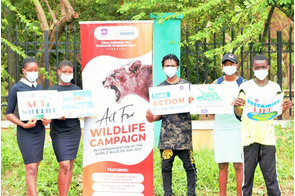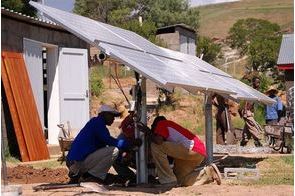Switching on the REDD+ key in Nigeria

Summary
There are ample REDD+ preparation funds available in the form of grants.
The climate is changing, due to anthropogenic Greenhouse Gas (GHG) emissions into the atmosphere. The good news is the fight against climate change already started over four decades. Over this period, several mechanisms have been developed around the world, particularly since the United Nations Framework Convention on Climate Change (UNFCCC) was signed back in 1992. All these tools converge to achieve one purpose: Reducing GHG emissions into the atmosphere, with the ultimate objective to keep the temperature rise to a level that will not make life on earth miserable or impossible. A rise in temperature above two degrees Celsius by the end of the 21st century will cause irreversible damage to the earth’s surface.
Apart from achieving reductions in GHG emissions and forestalling extreme temperature rise, there are other benefits associated with the use and implementation of these tools, especially in Africa where not much has been done in terms of climate change mitigation. One of the tools developed to fight climate change is the REDD+ mechanism. REDD+ stands for reducing emissions from deforestation and forest degradation, and also fostering conservation, sustainable management of forests, and enhancement of forest carbon stocks. (Forest Carbon Partnership Facility of the World Bank.)
This mechanism allows for monetizing the emission reductions from deforestation and forest degradation. It can bring about real sustainable development to Nigeria and Africa if well understood and applied. However, it is certainly one of the most complex mechanisms that has been developed since the inception of UNFCCC. Therefore, it is perhaps important we get a better understanding of this mechanism before we see how it can benefit a country like Nigeria, if she is prepared to seize the opportunity.
Understanding the concept of REDD+
REDD+, like the Clean Development Mechanism (CDM), is an off-set mechanism, meaning that it allows developed countries to “purchase” emission reductions from projects developed in developing countries to off-set/compensate part of the emissions they (developed countries) cannot reduce domestically. Projects that achieve these emission reductions from developing countries are far cheaper to implement compared to activities that would reduce the same volume of emissions in the developed countries.
The discussions on the concept of REDD+ started back in 2005 during the 11th Conference of the Parties (COP11) to the UNFCCC that took place in Montreal, Quebec, Canada. The concept, at the beginning, was just based on reducing greenhouse gas emissions from “deforestation.” In the course of discussions, other components like “degradation” and many other components were then added to it. The REDD+ includes the following pillars: (1) reduction of deforestation; (2) reduction of forest degradation; (3) forest conservation; (4) sustainable management of forest and (5) enhancement of forest carbon stocks.
Developing a REDD+ project consists of implementing one or more of the five REDD+ pillars in a given location. It sounds simple when you say it in one sentence. But the reality is that, developing a REDD+ project is very complex, especially because one has to develop what is called the “Reference Scenario” that represent what would happen in the future if the REDD+ is not implemented. Carbon Credits that one will get are then the difference between this “Reference Scenario” and the “Project Scenario”. Many resources are available online that guide the development of REDD+ projects. (As a reference for readers, take a look at: www.unredd.net; www.unccelearn.org/redd+resources; www.theredddesk.org; www.redd-database.iges.or.jp; etc.)
As of now, REDD+ credits are only sold on voluntary markets. This means buyers of these credits do not have the obligation to reduce their greenhouse gas emissions. Nevertheless, the volume of REDD+ credits is the highest sold in the market, as shown by the figure below which is extracted from a publication by Ecofys “State of the Voluntary Carbon Markets 2014.”

REDD credits represented 38% of the voluntary market in 2013. This figure will continue to increase as the REDD+ concept is more and more understood and is improved upon to reduce its complexity.
Benefits of REDD+ in Nigeria
A set of facts show that developing REDD+ projects in Nigeria will bring a lot of environmental benefits for Nigeria and the entire African continent. For one, the country has lost more than 50% of its forest cover between 1990 and 2010 -- the highest deforestation rate in the world. As a result of this, reforestation needs to be taken seriously in Nigeria or, at least, deforestation should be more controlled. REDD+ projects are the key to tackling this issue of deforestation.
Desertification is increasing in the northern parts of Nigeria. With a population nearing 200 million people, Nigeria needs to invest in massive infrastructure development and agricultural activities to be able to meet the demands of its rising population. REDD+ is all about providing solutions to these challenges; regaining degraded land and forests in a sustainable manner and giving opportuneness to people to carry out their normal activities on the land.
Nigeria is emitting 320 million tons of carbon dioxide per year, second in Africa to South Africa. Therefore, if Nigeria were to take the lead on the fight against climate change in Africa, then this volume of emission would be too high and unsustainable. It needs to be reduced drastically. Apart from developing renewable energy sources and implementing energy efficiency measures, reforestation will help the country in its emissions reduction objective.
REDD+ in Zambia
Implementing any of the five pillars of REDD+ in any country or location can bring about multiple benefits to the local population. First of all, jobs will be created for the implementation and management of the projects. According to a report on Zambia’s National REDD+ programme and the value of the country’s forest ecosystems (as published on the UN-Redd Programme portal (www.unredd.net)), Zambia’s forest ecosystems contributed US$ 1.3 billion in 2010, roughly 6.3 per cent of its gross domestic product (GDP).
The United Nations Environmental Programme (UNEP) study also shows that “non-timber forest products can generate four million person-years of employment annually, along with $14 billion in international trade and far more in local subsistence benefits. Additionally, stimulating sustainable management of forests could provide up to 16 million additional jobs globally.” Zambia’s forests provide about 1.4 million jobs.
The study, “Benefits of Forest Ecosystems in Zambia and the Role of REDD+ in a Green Economy Transformation,” estimates that “when ecosystem services provided by forests are accounted for, forests make a direct contribution to the national economy equivalent to about 4.7% of gross domestic product (GDP), which rises to 6.3% with the application of multiplier effects.” This means that actions to protect forest ecosystems can, at the same time, provide huge benefits for inhabitants of a country as a whole.
State of REDD+ development in Nigeria
REDD+ projects have to be supported by the government in any country they are developed. Any private REDD+ developer will need an endorsement and approval from the government, usually through the ministry in charge of the environment or through an inter-ministerial committee. Because of the complex nature of REDD+ projects, they take a lot of time to bear fruits. That means the government of a country needs to do the groundwork for REDD+ development project. The government also has to ensure there is a strategy for REDD+ projects to have positive development impact, rather than simply reducing GHG.
Nigeria has begun some preliminary work in this regard, albeit at a slow pace, compared to countries with less forest resources like Zambia that are already seeing REDD+ funding inflow. The UN-REDD Nigeria Programme Steering Committee (PSC) was established in 2013 and is leading the REDD+ strategy of the country. Its implementation timeframe is supposed to span until 2017. However, to date, only 42% of the USD4 million received from UNDP, UNEP and FAO for the development of the strategy and a pilot project in Cross River State has been disbursed. There is a need to speed up the work if Nigeria is to meet the four outcomes of its objective which are: i) to improve institutional and technical capacity at the national level; 2) to prepare a framework to expand REDD+ across Nigeria; 3) to build the institutional and technical capacity for REDD+ development and 4) to demonstrate REDD+ readiness in Cross River State.
Lessons from CDM
Africa has not benefited much from the Clean Development Mechanism (CDM) of the Kyoto Protocol that was largely built for the continent. The CDM is a project-based mechanism between developing and developed countries. Clean projects are implemented in developing countries and the greenhouse gas emission reductions associated to these clean projects are used by developed countries to off-set part of their emission reductions commitment under the Kyoto Protocol.
As of today, thousands of CDM projects exist all over the world since the CDM entered into force in 2005. Unfortunately, only 2% of these projects are registered in Africa. Nigeria has the potential to develop hundreds, if not thousands, of CDM projects but it has succeeded in registering only about 10. Asian and Latin American countries are better prepared and are benefiting from the CDM.
There are ample REDD+ preparation funds available in the form of grants. Nigeria needs to request for these funds to put in place a good REDD+ strategy and build the capacity of stakeholders in the country to develop REDD+ projects. Nigeria can get more proactive in the REDD+ programme and implement projects that will not only help to regain a good part of its forests cover, but also achieve plenteous development benefits.
Durando Ndongsok, a Financial Nigeria Columnist, is Managing Director of the Cameroon based S2 Services Ltd. S2 Services promotes business approach to sustainable development with the belief that this is the best approach to develop Africa as philanthropy has shown its limits. Durando has been working for several years in the CDM industry. Email: d.ndongsok@s2-gmbh.com; URL: www.s2-gmbh.com
Related
-
Germany’s KfW supporting renewable energy projects in Africa
DEG’s strategic goals is to finance environmentally-friendly projects in sub-Saharan Africa.
-
Access Bank’s environmental sustainability credentials
Through its Green Social Entrepreneurship Program, Access Bank has empowered 238 entrepreneurs, 70% of whom are women.
-
First two projects for Africa Climate Fund get approval
The AfDB-managed ACCF was established in April 2014 with a EUR 4.725 million contribution from Germany with the objective ...







